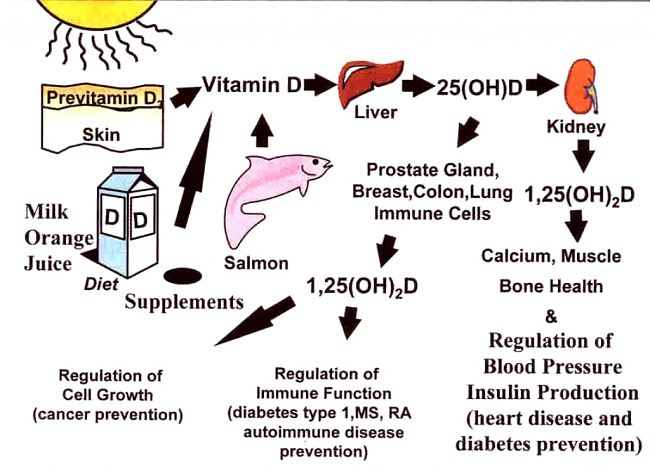Vitamin D Deficiency in Mothers Linked to Childhood Speech Problems
New Australian research has found an important association between speech difficulties in children and vitamin D deficiencies in pregnant women. The research was conducted by the Perth based Telethon Institute for Child Health Research and involved 750 pregnant women. Follow up test on their children's behavioural development and speech was conducted over a 10 year period. Children whose mothers had low levels of vitamin D during their pregnancies were found to be are twice the rate of language problems. The study found no association between Vitamin D levels and childhood behaviour and emotional problems.
The head of the study Andrew Whitehouse recommended that pregnant women should increase their intake of vitamin D by taking supplements or via controlled sun exposure. Given the risk of skin cancer taking supplements may be preferred.



Vitamin D has long been known to be important for brain development and function. Vitamin D is made in the skin when the body is exposed to ultraviolet light (UVB) with wavelengths from 270-300 nm. These wavelengths are present in sunlight and vitamin D is produced when the UV index is greater than about level three. Vitamin D degrades rapidly and regular sun exposure or supplements are required to maintain levels in the blood. Depending on the intensity of UVB rays and the minutes of exposure each day, an equilibrium can develop. There has been increasing concern at the increasing incidence of the childhood disease rickets in the US which appears to be liked with reduced sunlight exposure (discussed below).
The language problems that developed in the Western Australian children related to difficulties in acquiring new words and also putting words together to make a sentence. The research, which is the largest of its kind, is published in the international journal Pediatrics made regular follow up checks of the children’s development and behaviour regularly until children reached their teens. The study is particularly significant given that Vitamin D levels among women have been shown to have been steadily declining over the past 20 years.
The developing baby is completely dependent on the mother for its Vitamin D levels and this applies to the developing brain. While these findings are very significant the researchers cautioned that the study did not establish cause and effect and other associated factors could be involved. More research is required to better understand the role and importance of Vitamin D levels in brain development. The most immediate priority is to explore whether supplementing Vitamin D during pregnancy could lower the risk of language problems developing in yound children.
Other Health Issues associated with Vitamin D deficiencies
Multiple Sclerosis
Vitamin D appears to offer some protective against the development of multiple sclerosis, though definitive research is required to prove this. The initial suggested link was based on observations that MS incidence appeared to be associated with latitude, and was high in the high-latitude regions of the world which had lower little sunlight. Recent research has supported this link including sun exposure, dietary sources, and serum concentrations vitamin D. However many questions about this link remain to be answered, including the mechanism by which vitamin D offers protection, how genetic variations may modify the effect in ether direction, and whether vitamin D could have an effect on progression of MS.
A 2004 Harvard study of 200,000 women, published in the journal Neurology reported that MS incidence decreased with increasing vitamin D intake. Women with the highest vitamin D levels showed 33 % lower incidence than women with the lowest intake. Another article published in the journal 'The Lancet Neurology' predicted that if the link was true, increasing the levels of 25-hydroxyvitamin D in the blood of young adults and adolescents above 100 nanomoles per liter could possibly prevent 70 % of MS cases in Europe and the US. In addition the article concluded that these concentrations were common in people who engaged in outdoor lifestyles in sunny regions. However most people could only maintain these levels through diet or supplements.
Rickets and Childhood Diseases Associated with Vitamin D Deficiency
Rickets, is a childhood disease where the long bones have stunted growth and show various deformities. Rickets can be caused by phosphorus or calcium deficiencies as well as a lack of vitamin D. Rickets used to be prevalent worldwide, but currently it is largely found in low income countries in Asia, Africa or the Middle East. Vitamin D deficiency is the major cause in most countries because breast milk is generally low in vitamin D in these countries, and climatic conditions and social customs can prevent adequate UVB exposure. In countries with high sunlight levels such as South Africa, Nigeria and Bangladesh there is a higher rate of rickets caused by calcium deficiencies in the foods with limited availability to dairy products.
The incidence of Rickets has risen alarmingly in the US and other western countries, perhaps related to reduced rates of sunlight exposure (See Did Skin Color Evolve as an Adaptation to Sunlight Intensity?).